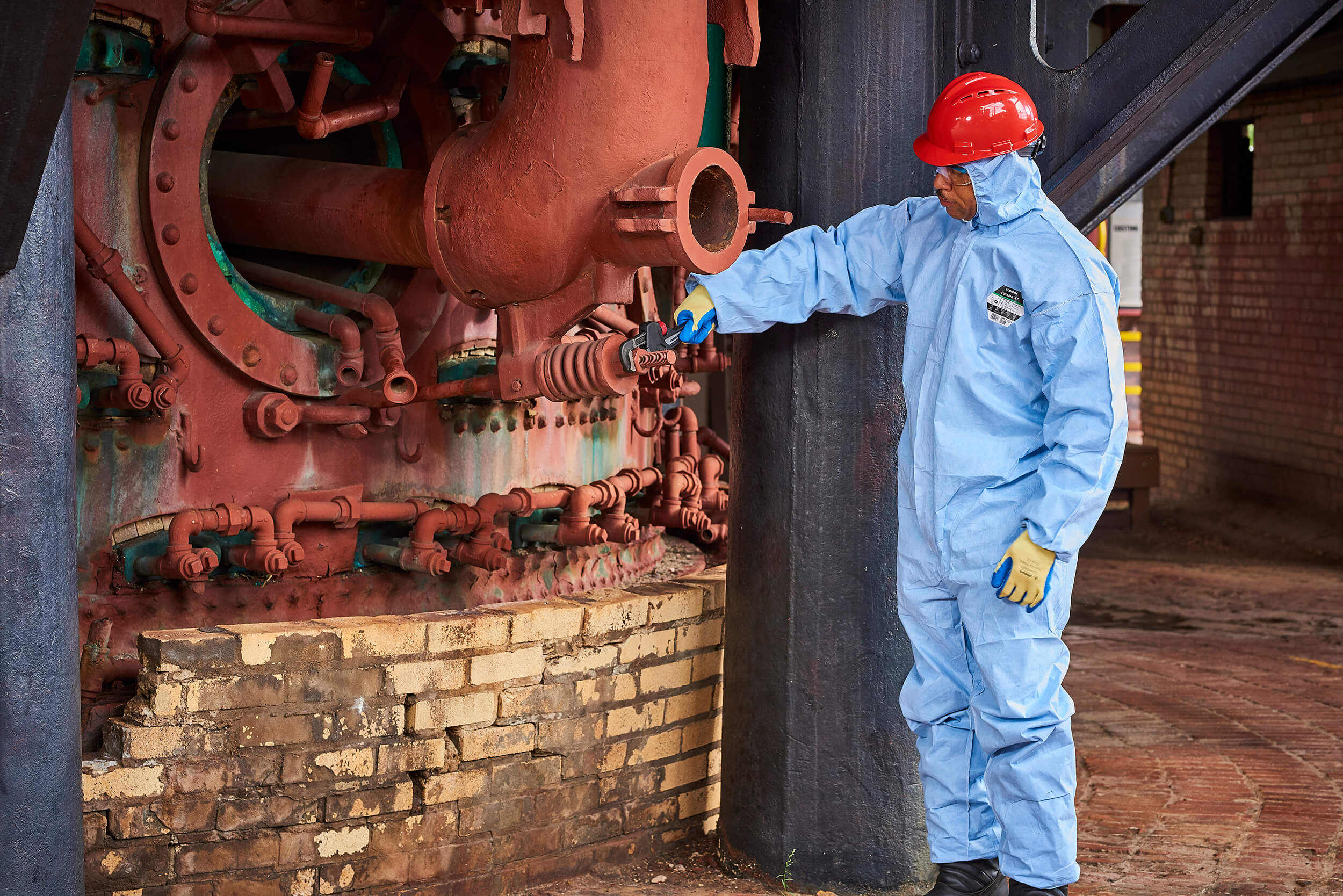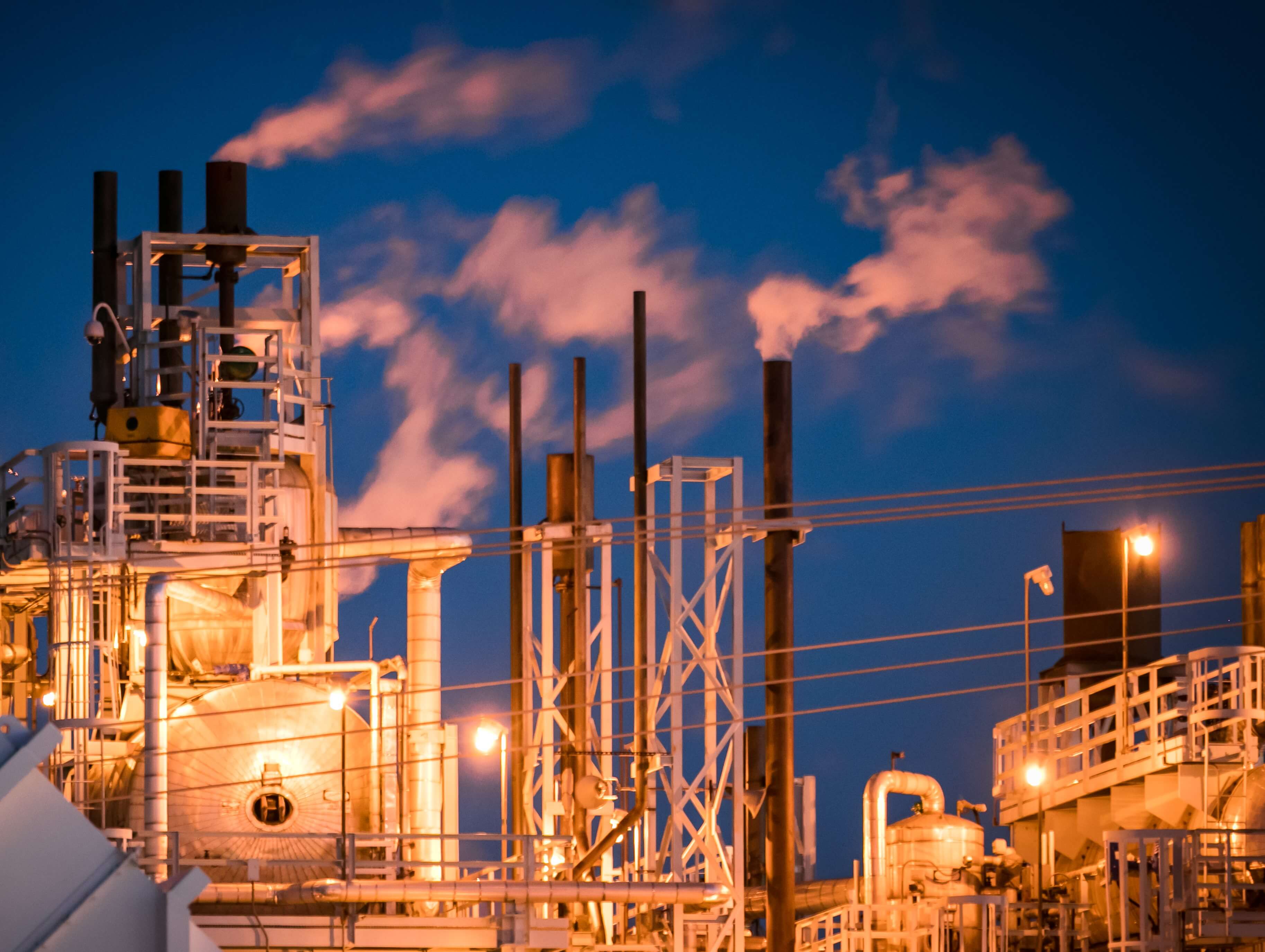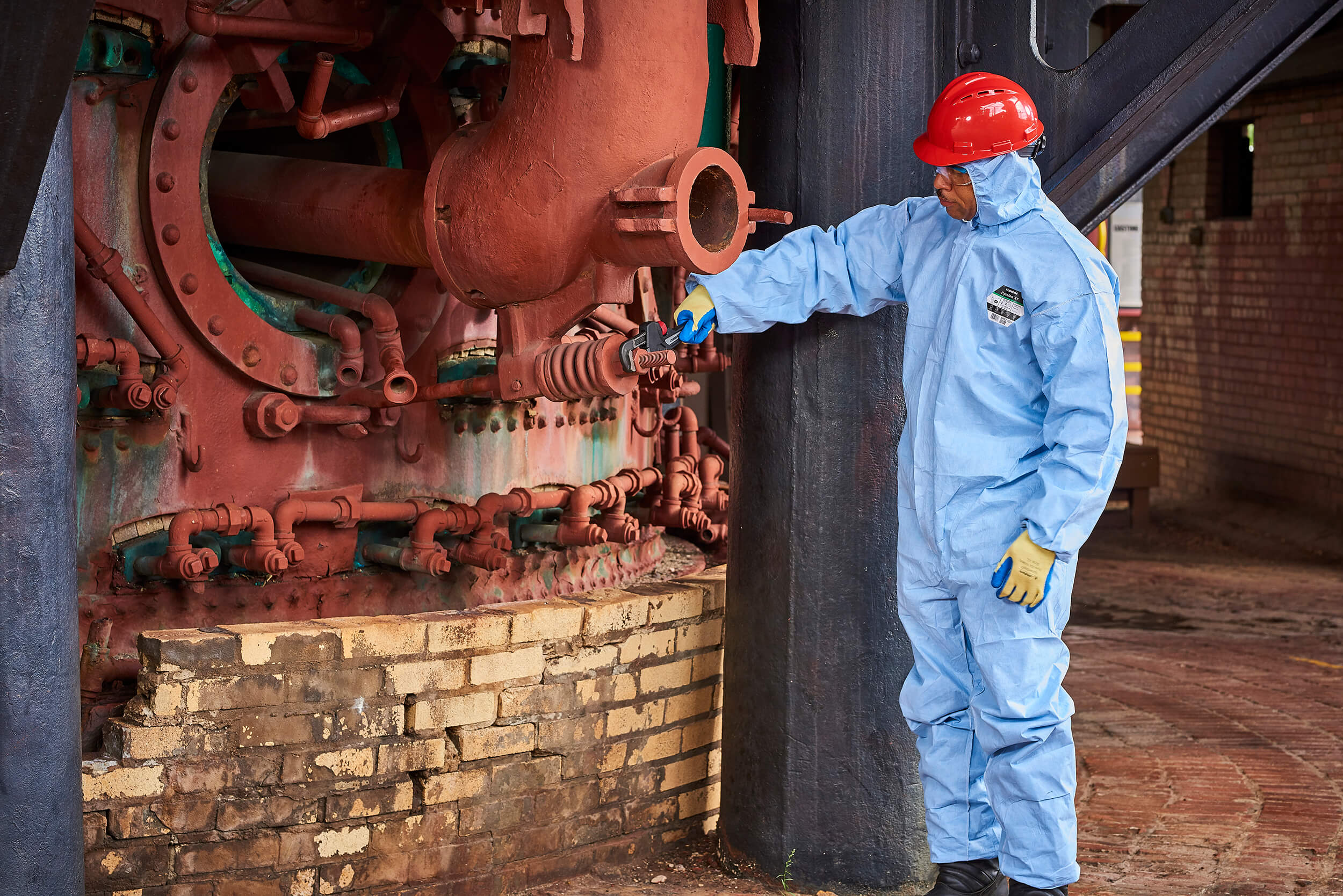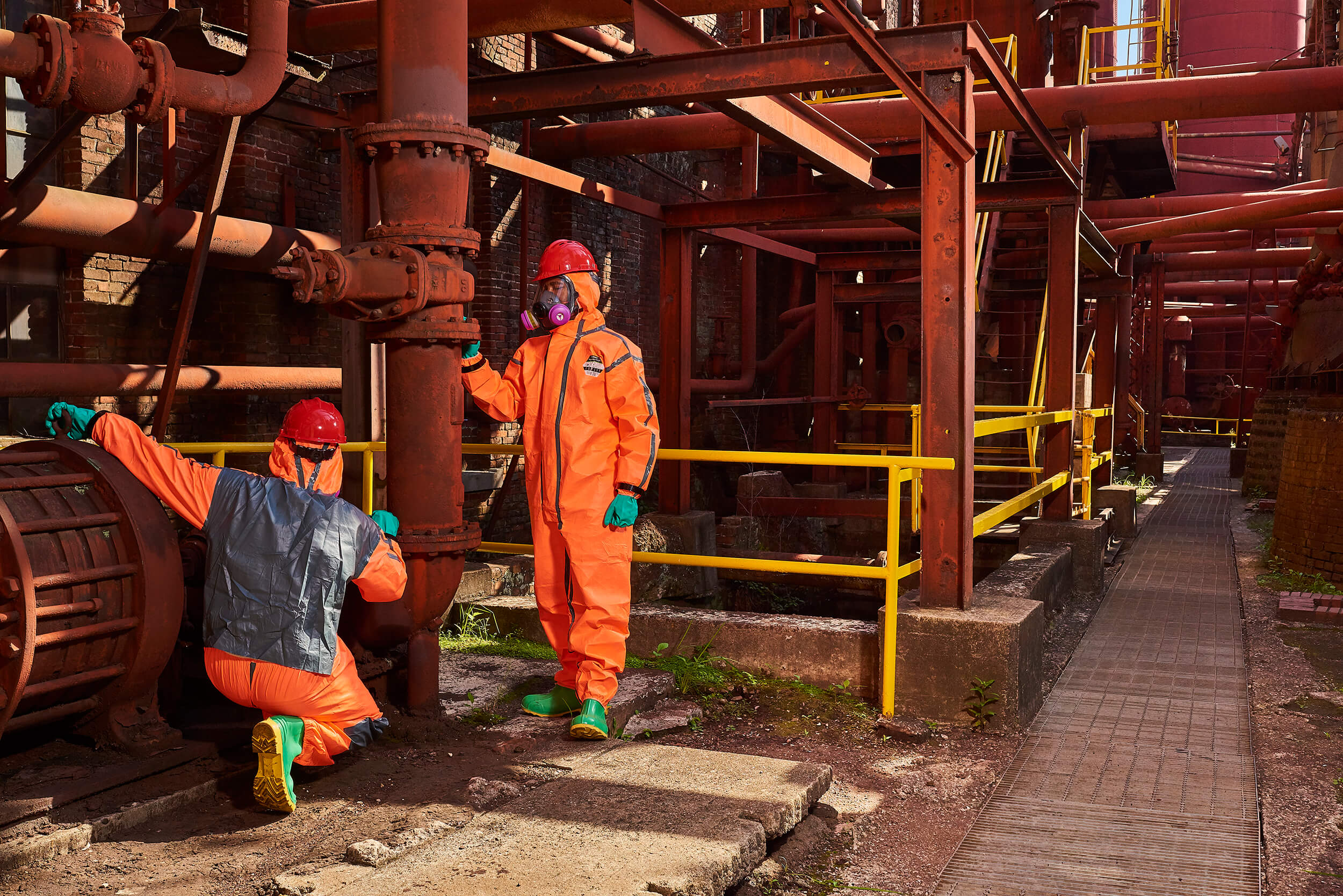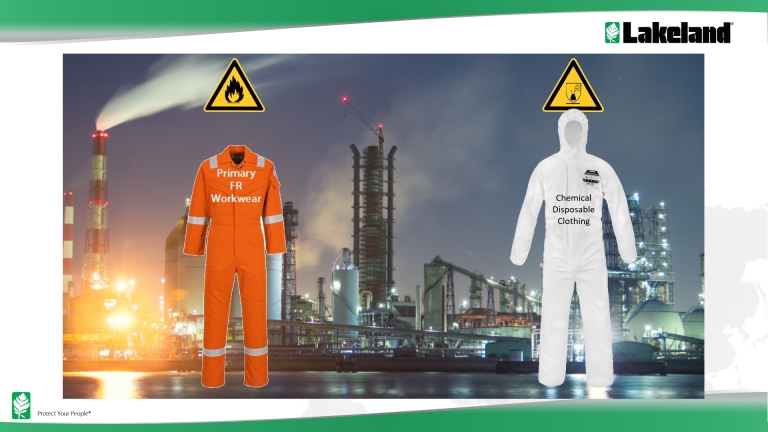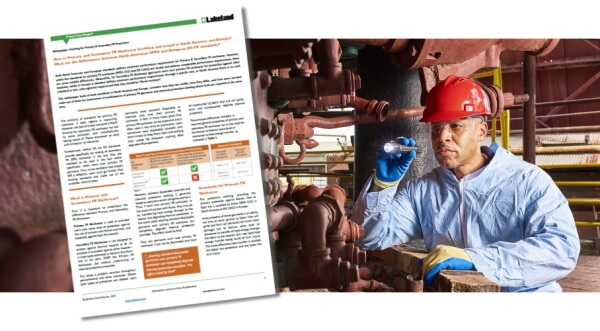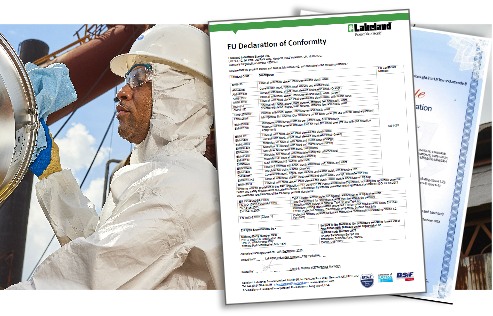In the petrochemical environment, workers can come into contact with flammable substances which can have serious consequences when the right type of PPE is not applied prior to use. However, workers may also be exposed to other kinds of heat energy in oil and gas plants which can influence the PPE required to complete a task, as it comprises of different features: fabric and most importantly, testing.
Skin burns result from an increase in skin temperature which is too rapid for the cells to handle. This is a direct consequence of heat energy being transferred to the skin from a source. The likelihood of a burn is dependent on the amount of heat energy and how quickly it’s transferred.
Though any type of heat energy can cause a burn, some are more critical than others (transfer by contact is much quicker and easier than by radiation). The purpose of heat protective PPE is, therefore, to prevent or delay the transfer of heat energy. The effectiveness PPE against different heat energy types is measured by 5 different tests in the EN 11612 standard for clothing for protection against heat and flames.
Heat Energy Types found in Petrochemical Environments
1. Radiant Heat
Transmitted through electromagnetic waves and then absorbed by objects and clothing, you don’t need physical contact with radiant heat sources in order to feel their effects. The shorter the electromagnetic wave, the higher the temperature.
The amount of heat energy transferred from a source is dependent on: 1) the size of the body and concentration of heat energy, 2) how effectively it radiates energy and 3) the proximity of the person to it. For instance, a large concentrated heat source at a relatively low temperature – but higher than skin temperature – may cause a burn because more heat energy is transmitted in a shorter time.
A relatively small heat source at a high temperature – such as a lighter or candle – on the other hand, contains little energy so, with close, short-term contact or proximity, very little will be transferred to the skin. The critical issues for assessing radiant heat are the amount of heat energy being transferred and the proximity of the person.
If sufficient heat energy is transmitted quickly enough, radiant heat energy can cause burns just as any other heat energy can.
PPE to protect against radiant heat is measured by test ISO 9942, which is indicated by the code letter C on the garment label. PPE for lower levels of radiant heat energy may be used primarily to minimize discomfort. For more intense levels, such as working in or near furnaces, aluminized garments (which work by reflecting heat energy away from the wearer) may be required.
2. Vapors/Steam
When spread across a large surface area, steam is not particularly harmful. However, when it’s focused into a stream targeting a specific area, it can cause devastating burns. One of the main issues with steam-induced burns is that they look superficial and as a result, often go overlooked. However, what actually happens is that the steam penetrates the upper skin layer and causes severe, deeper 2nd or even 3rd degree burns to the lower layers of skin.
As well as penetrating the skin, steam can also enter gaps in PPE, such as between gloves and other connections, and cause burns where the steam enters the suit and settles on cooler parts of skin.
3. Convective Heat Energy
Convective heat transfer, also known as convection, is the transfer of heat from one place to another by the movement of fluids or plasma such as a flame.
This kind of heat energy transfer can occur very quickly – take flash fires, for example.
Flash fires are caused by ignition of a mixture in air and a dispersed flammable substance –a solid (such as dust) or a liquid – and in petrochemical environments where flammable chemicals are present (and potentially in the air), flash fires can happen very easily.
As flash fires are very short term (the combustible gas or dust is burnt immediately) FR clothing is only required to protect for a brief period (no clothing can protect against long-term exposure to flame).
But while convective heat energy is tested primarily by ISO 9151, indicated by code letter B on the garment label, flash fire protection is tested even more effectively by ISO 13506, the “Thermal Mannequin Test”. This test assesses predicted body burn resulting from a simulated flash fire with a garment worn over a test mannequin, giving a much better indication of the effectiveness of protection offered. It is optional in EN 11612, but more reputable manufacturers do conduct this test.
4. Contact Heat
As the name suggests, contact heat energy is heat energy that’s transferred through contact with a hot object or surface. To determine the likelihood of a burn or injury, you need to understand the amount of heat energy the heat source contains and how quickly that energy can be transferred to the skin. The temperature difference between the skin and the source, primarily the temperature of the source given skin temperature, does not vary that much.
Contact heat energy is measured by test ISO 12127-1 and indicated by code letter F.
5. Molten Metals
Finally, molten aluminum and molten iron splash. These materials are always handled at high temperatures – aluminum above 660°C and iron above 1538°C – to ensure persistent liquid form and not solidified.
However, while being handled in their liquid form, small droplets can occasionally splash out of the operating chamber, ignite and land on unsuspecting workers (causing immediate burns). Because of the high temperature of molten metals, few fabrics can protect against its heat energy more than momentarily. The critical issue, then, is that such droplets are allowed to immediately run or drop off the garment fabric rather than adhere in the same spot, transferring heat energy through. Fabric smoothness is, therefore, important, along with design factors such as ensuring pockets have flaps to prevent droplets falling into them.
Molten metals are tested by ISO 9185 – dropping molten aluminum (code letter D) and Molten iron (code letter E) onto fabric held at a 45o angle.
What PPE is required for these heat energy types?
In some cases, certain types of PPE are specifically designed for certain types of heat energy. For example Aluminized suits are designed for high-level radiant heat applications – and are commonly used in smelting, brick and cement manufacture, glass manufacture and so on.
However, in many cases, the principle is to identify the heat energy type and the potential level of heat energy transfer, and then use the various certification tests available to assess the protection level afforded by the protective clothing. The results of each of the heat energy tests (as detailed above) are classified into 3 or 4 classes; the higher the class, the higher the level of protection offered, so this can be a useful guide to selecting the most appropriate workwear.
The classifications can be used in direct reference to a risk assessment which has identified either low, medium or high risk of contact with a specific type of heat energy. So where a risk assessment identifies a high risk of a contact heat hazard, safety clothing with a Class 3 for contact heat (code letter F – so indicated on a garment label by “F30 would be most appropriate, whereas if the suggested risk is low a Class 1 garment might be chosen.
A secondary, but no less important issue can be whether other types of protection – such as chemical protection – are also needed. Standard chemical suits cannot be worn over garments for protection against heat energy as they are plastic and will burn, compromising thermal protection.
Our Pyrolon range of suits, however, are specifically designed to provide chemical protection whilst worn OVER flame and heat protective clothing and without compromising thermal protection. The range offers chemical protection through Types 3 to 6.
How to control thermal hazards?
The most effective way to control thermal hazards is to ensure your workforce understands the heat energy hazards present in the environment and how they can inflict burns or other damage. This can be done through a combination of health and safety training and prescribed reading on the different types of heat energy types in the work environment.
The first stage of any risk assessment is to ask whether the hazards can be removed entirely, and considering this first in the case of heat hazards is no different (for example, can the heat source be switched off or reduced for the duration of a specific task undertaken nearby?) However, the setting up of other control measures such as physical barriers might be considered.
A secondary issue to consider where heat is a factor is discomfort and heat exhaustion of workers. Working in high temperatures is likely to result in dehydration and heat stress, which can be dangerous. So, measures to manage these hazards must be established. Installing of air conditioning, reducing shift length or task duration and providing hydration stations are all appropriate solutions.
